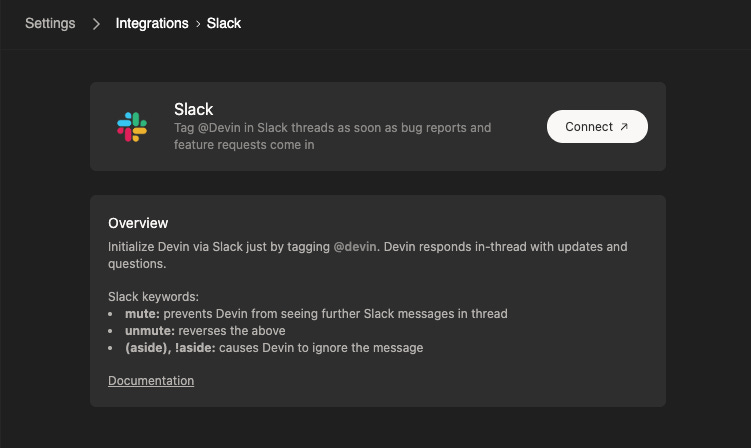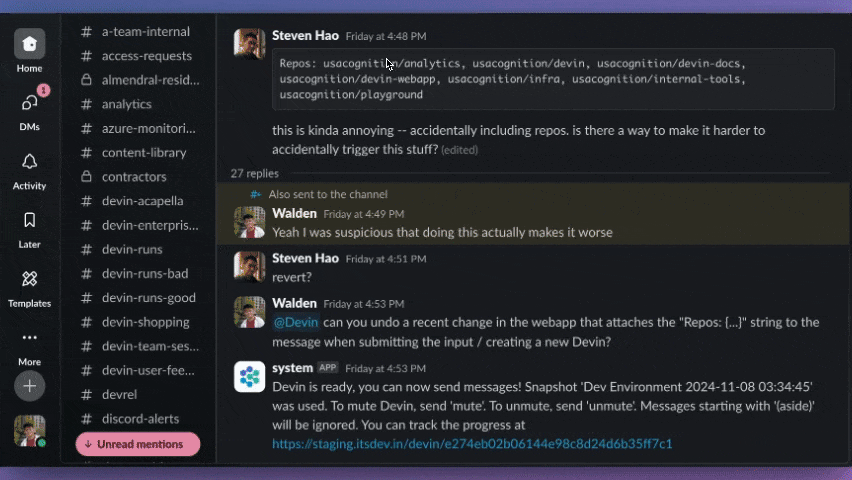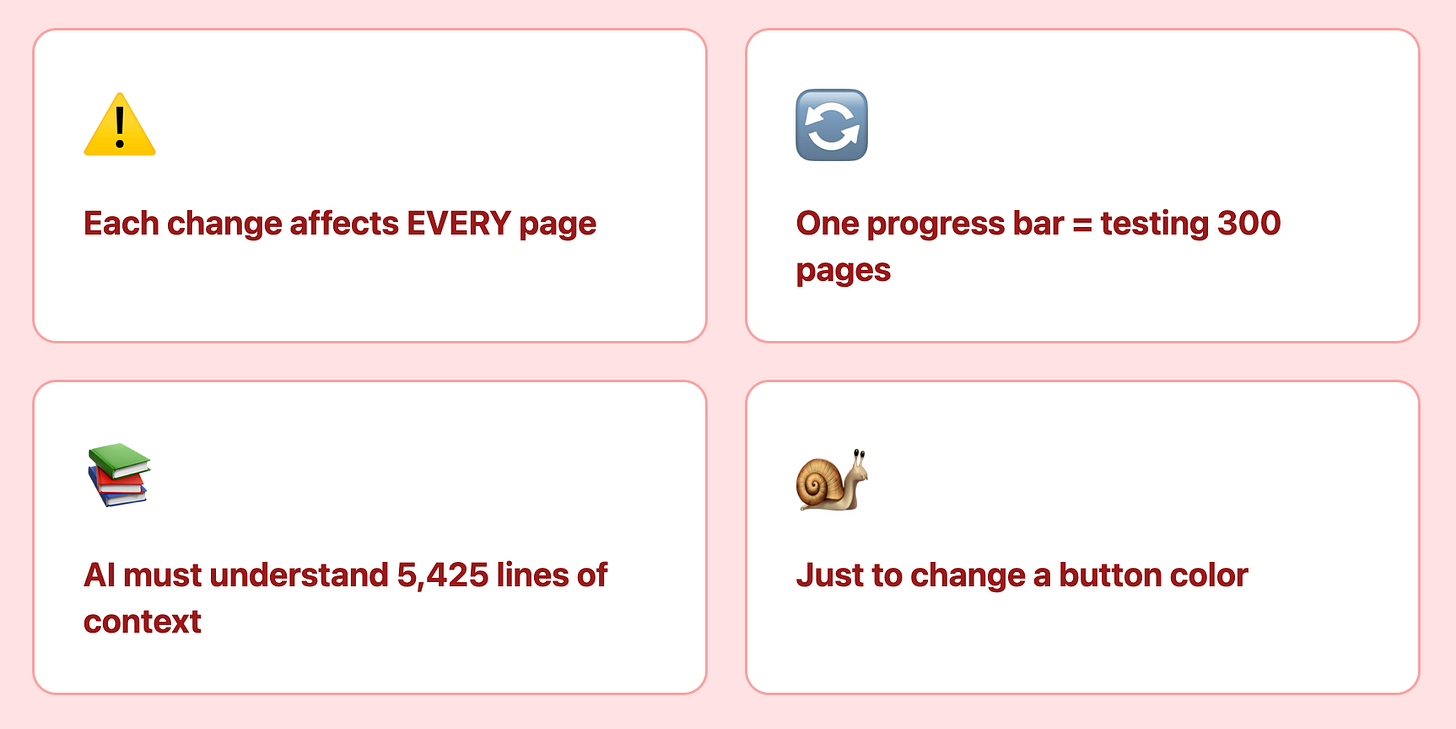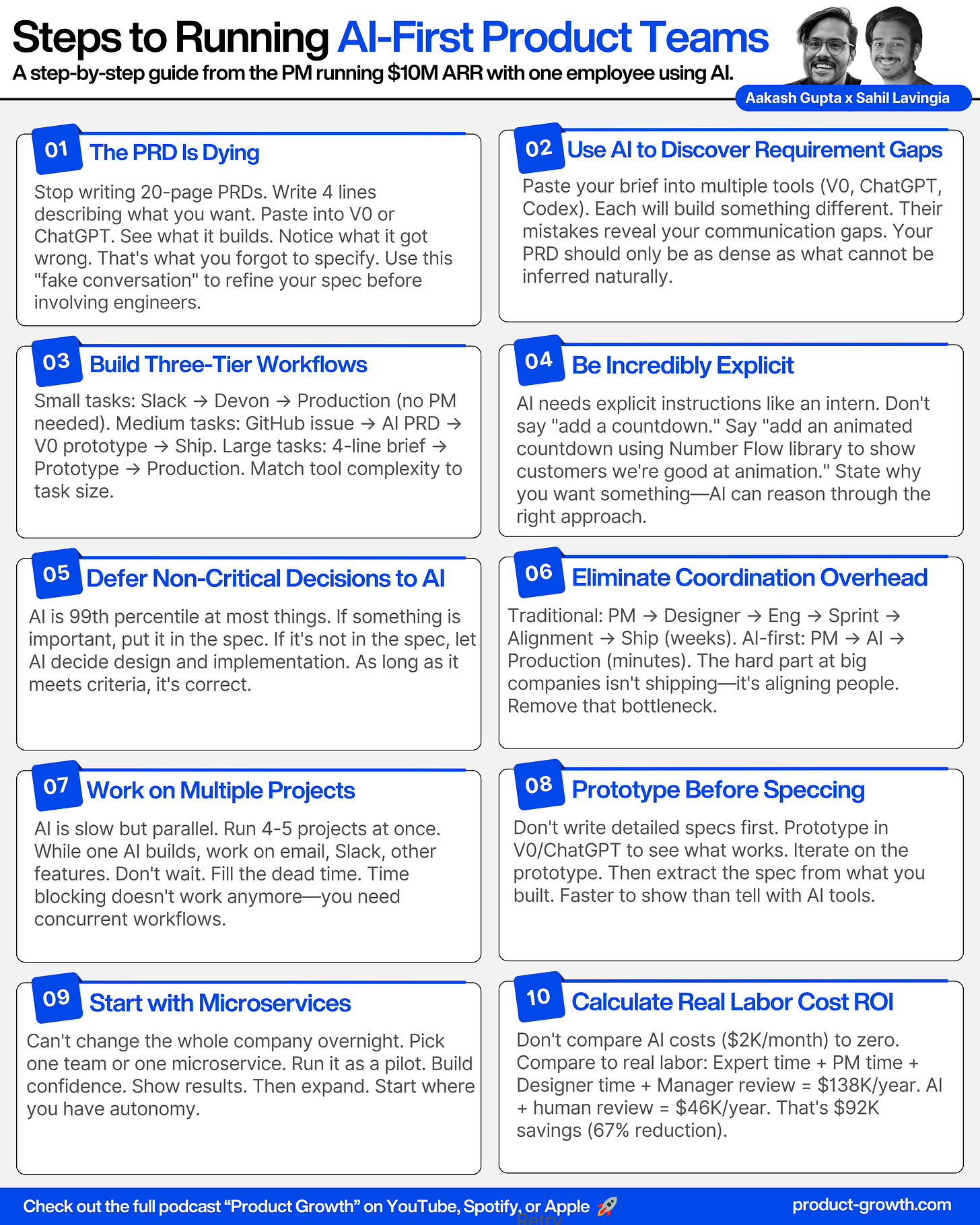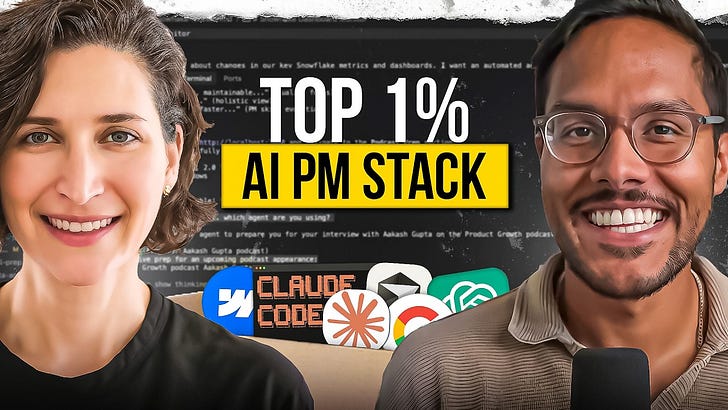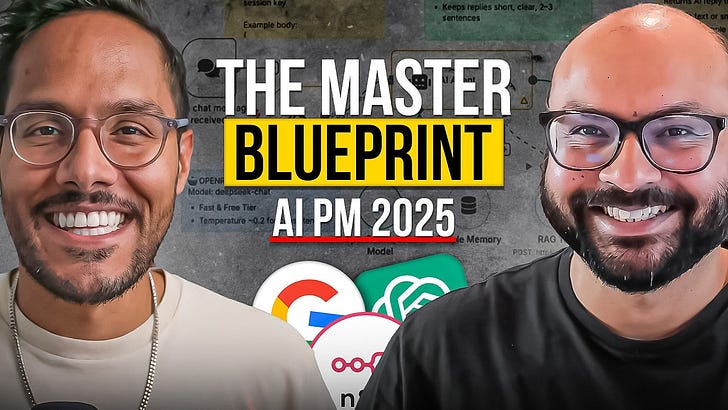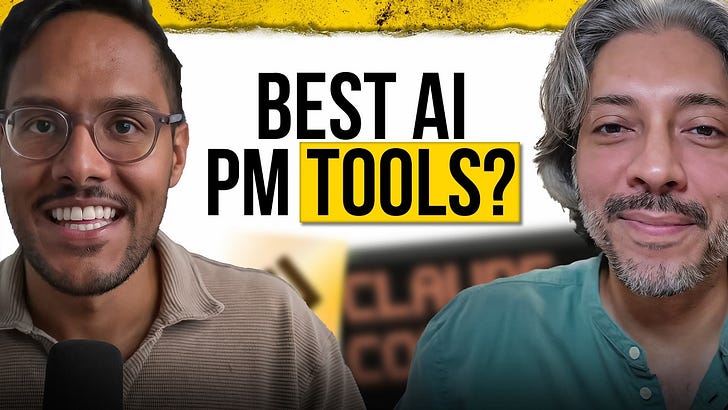Check out the conversation on Apple, Spotify and YouTube.
Brought to you by:
Testkube: Leading test orchestration platform
Kameleoon: Leading AI experimentation platform
The AI PM Certificate: Get $550 off with ‘AAKASH550C7’
Today’s Episode
Most PMs still live in a rigid world of 2-week sprints. Writing 10-page PRDs. Coordinating between designers and engineers while not getting close to the “bare metal” of the product themselves.
Sahil Lavingia (shl on X with 382K followers) lives in the future. He ships features from Slack to production in 10 minutes.
It can be particularly illustrative to see how he does it, to:
Model the future, for your organization
See what to do, if you go out on your own
So that’s today’s episode. Sahil demoes his next level AI workflow and explains how Gumroad ($10M ARR, $100M valuation with 1 employee) can operate this way.
It’s a fantastic resource for AI PMs and product leaders.
P.S. Want me to coach you to your dream job? I’m coaching a group of 30 Nov-Jan. Join us.
Your Newsletter Subscriber Bonus
For subscribers, each episode I also write up a newsletter version of the podcast. Thank you for having me in your inbox.
Today’s guide covers:
The Full-Stack PM Workflow: v0 → Slack → Devin → Live in Production
How to Set Up Your Codebase for AI
The Future of PRDs and Sprint Planning in Big Companies
1. The Full-Stack PM Workflow: v0 → Slack → Devin → Live in Production
As a PM, you live in a world of quarterly planning and 2 week sprints.
As CEO of a 1 employee company, Sahil lives in the future.
Here’s how you can ship as fast as him:
Step 1 - Decide if you Prototype, Discuss, or Go Straight to Devin
Instead of starting with a lengthy PRD, Sahil starts with a v0 AI prototype.
The design forces you to reckon with details you would’ve missed in the PRD anyways.
—Sahil
But don’t always start at a prototype.
Think of it this way:
Small and clear feature → Straight to Devin
Medium or unclear feature → Team Discussion
Large feature → Prototype first
Sometimes, it might be as simple as a customer request that has enough context (which he demoed) or a a Github discussion with his team (which he also demoed).
Step 2 - Set up Devin as your Slack bot
Connect Devin to your Slack workspace and codebase.
Step 3 - Prompt Devin in Slack
If it’s a big feature → give Devin the v0 prototype
If Devin can understand the request from Slack context → Let it code
If it needs clarification → Add one line of context
Step 4 - Review the Code and Design, Ship
Devin opens a PR. You review it (or don’t, depending on importance).
Merge. Deploy.
Done.
Takeaway for PMs
You probably won’t have this ability in a bigger organization, yet.
But it might make sense to find small workflows in your own team you use Slack and Devin, or Linear and Cursor, for small features that get reviewed by your on-call engineer.
2. How to Set Up Your Codebase for AI
What’s the biggest learning Sahil has had using AI code?
Your codebase architecture determines your AI velocity.
Your tool stack? Super simple:
v0
Devin
Cursor
Github
Then, the key skill is architecting your codebase for AI.
His biggest tip for this? Migrate from CSS. CSS murders AI productivity
Sahil showed this with his own products:
Gumroad has 100+ CSS files. Each change affects every page. One progress bar update = testing 300 pages. The AI has to understand 5,425 lines of context just to change a button color.
Flexile, Sahil’s newest product, has zero CSS files. Just one 181-line theme file that defines the design system.
This makes it very easy to code with AI in Flexile, and for you if you take it up, to take code from v0 and Devin into your design system.
Migrate from CSS to Tailwind today (Gumroad is).
This is the first-piece of advice I give to companies trying to become AI-first
—Sahil
3. The Future of PRDs and Sprint Planning in Big Companies
I’ve written a lot about the future of the PRD. What does Sahil’s workflow tell us about the future of PM artifacts like PRDs, and engineering rituals like Sprint Planning?
We actually talked about why work is so slow in big companies.
The PRD is there as an alignment mechanism.
So is sprint planning and rigid sprints:
Most of that … is going to persist a lot longer than people think because the production process is quite rigid in most of these organizations. You’re not going to see companies all of a sudden decide to get rid of three steps in their process.
—Sahil
These things are likely to stay around longer than we think: decades probably.
But, it’s worth even the old, traditional companies like Chevy and Walmart finding the spots:
Pick specific teams or projects
Set a bar for low-stakes features
Let AI handle those with engineer review
But the overall change will be slower than most think, because:
It’s very hard when you have a lot of process to unwind it.
—Sahil
Key Takeaways
I’m growing a clips channel. Please give it some love and subscribe.
Where to Find Sahil Lavingia
X (Twitter) (I love his Twitter!)
Related Content
Podcasts:
Newsletters:
P.S. More than 85% of you aren’t subscribed yet. If you can subscribe on YouTube, follow on Apple & Spotify, my commitment to you is that we’ll continue making this content better.


